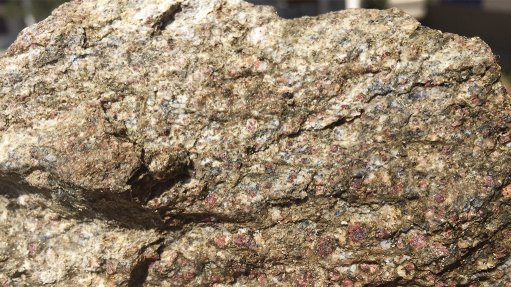
NIOBIUM PROMISE The Panda Hill niobium project's definitive feasibility study has focused on producing an average of 5 400 t/y of niobium in the form of ferroniobium over its life-of-mine
Metallurgical engineering company MDM Engineering expects to complete the front-end engineering design (Feed) at the end of this month for niobium mining company Panda Hill Tanzania’s (PHT’s) niobium project located near the town of Songwe, in Mbeya, Tanzania.
Mauritius-based PHT is jointly owned by international niobium development company ASX-listed Cradle Resources (50%) and private-equity fund Tremont Holdings (50%), which operates through a branch office in Tanzania.
MDM senior project manager Roy O’Connor notes that MDM Engineering was awarded the Feed for the Panda Hill project in May. The aim is to further improve efficiencies with regard to operability, maintainability, capital and operating costs, as well as execution timing.
MDM’s scope of work included integrating the mine design and operation and the tailings dam design and operation. A major focus of the Feed has also been on derisking the project and preparing it for project implementation, explains the company.
It is expected that the execution phase of the project could start in early 2017, with possible completion scheduled for mid-2018.
MDM also completed the definitive feasibility study (DFS) for the project in March.
“The DFS has focused on producing an average of 5 400 t/y, or 5.4-million kilogrammes a year, of niobium, in the form of ferroniobium over the 30-year life-of-mine,” says O’Connor. A 1.3-million-ton-a-year concentrator will be constructed initially, producing an average of 3 400 t/y of niobium in the form of ferroniobium within the first four years, he adds.
O’Connorpoints out that ferroniobium constitutes 90% of the world’s niobium consumption, with the product sold directly to steel mills, where it is used in the production of high-strength, low-alloy steels.
The DFS outlines the development of an opencut mine at Panda Hill and the treatment of selected material through a milling and two-stage flotation process to produce a concentrate, which, after cleaning, is suitable for ferroniobium production in an on-site converter.
“The Panda Hill operation could expand to 2.6-million tons a year in the fifth year, depending on the market conditions prevalent at the time,” states O’Connor.
The DFS incorporates the results of technical studies undertaken by Panda Hill since 2013 and represents the first significant work on the niobium deposit since the 1970s.
The project is expected to uplift the local community in the Mbeya/Songwe area. “[Through] a major community initiative . . . by Panda Hill Tanzania in July . . . the mine donated 402 desks to schools in the Songwe area. “The manufacturing of the school desks was undertaken by local Songwe district carpenters,” O’Connor explains.